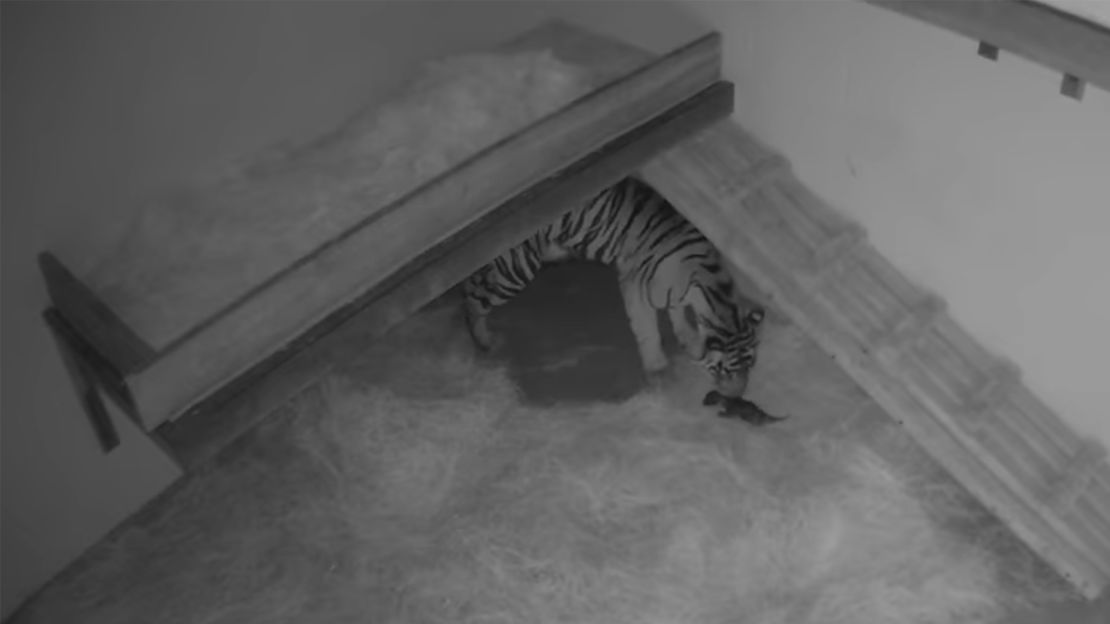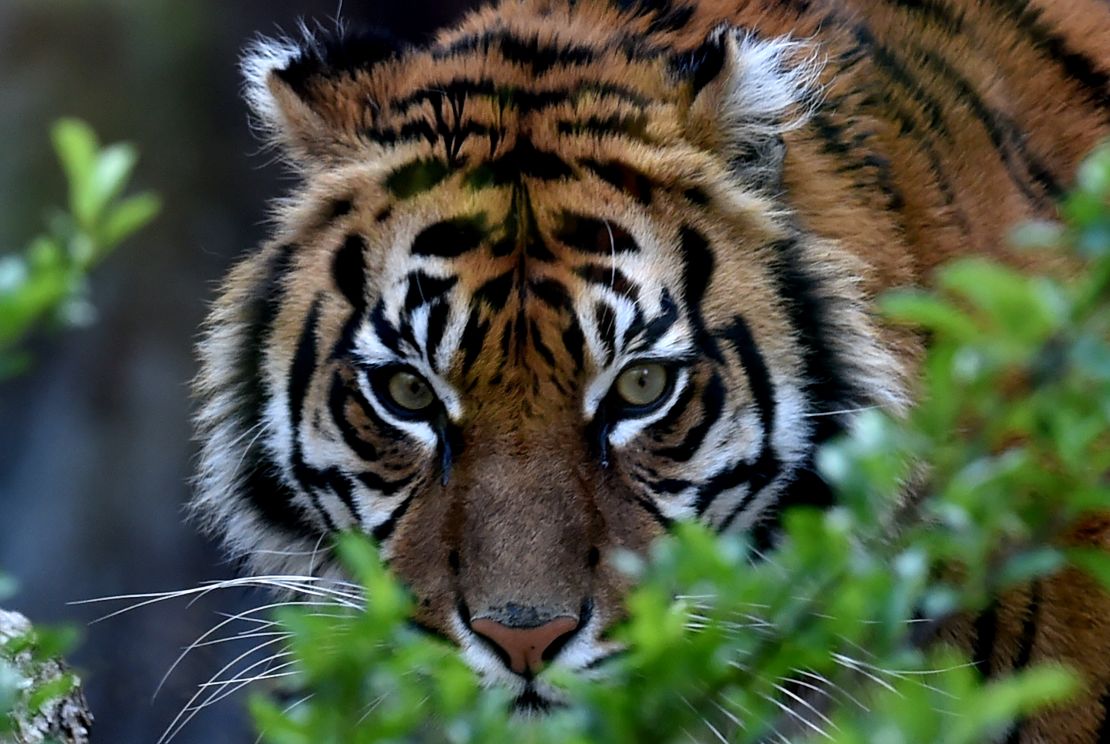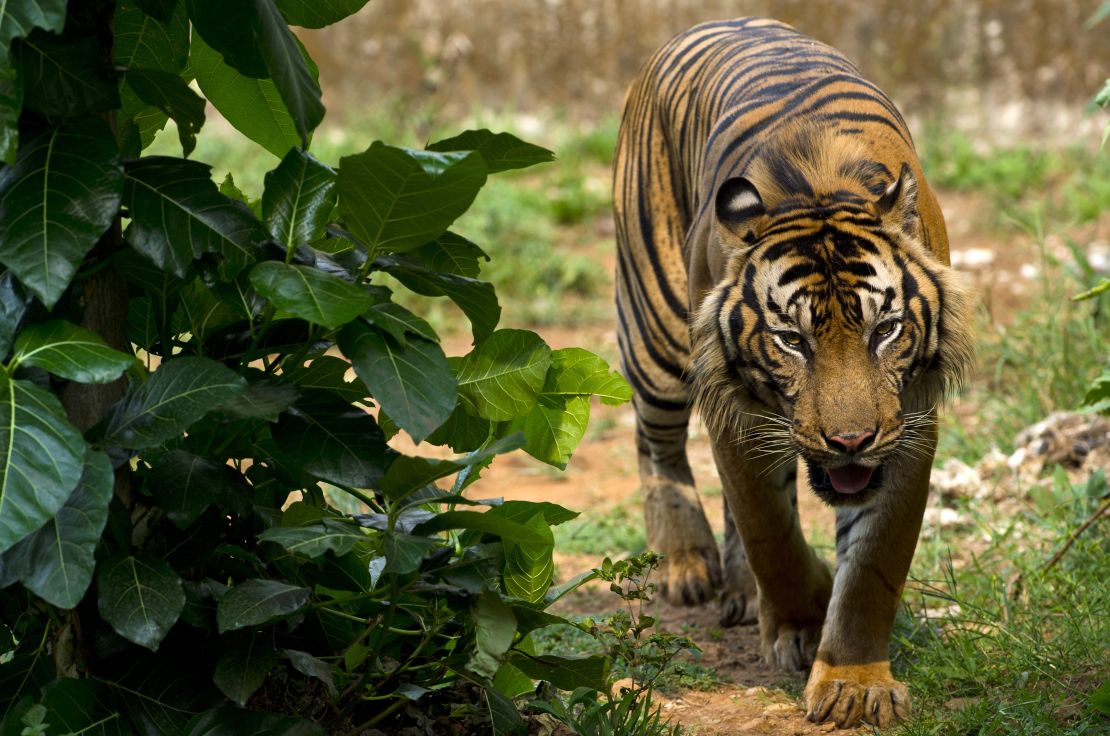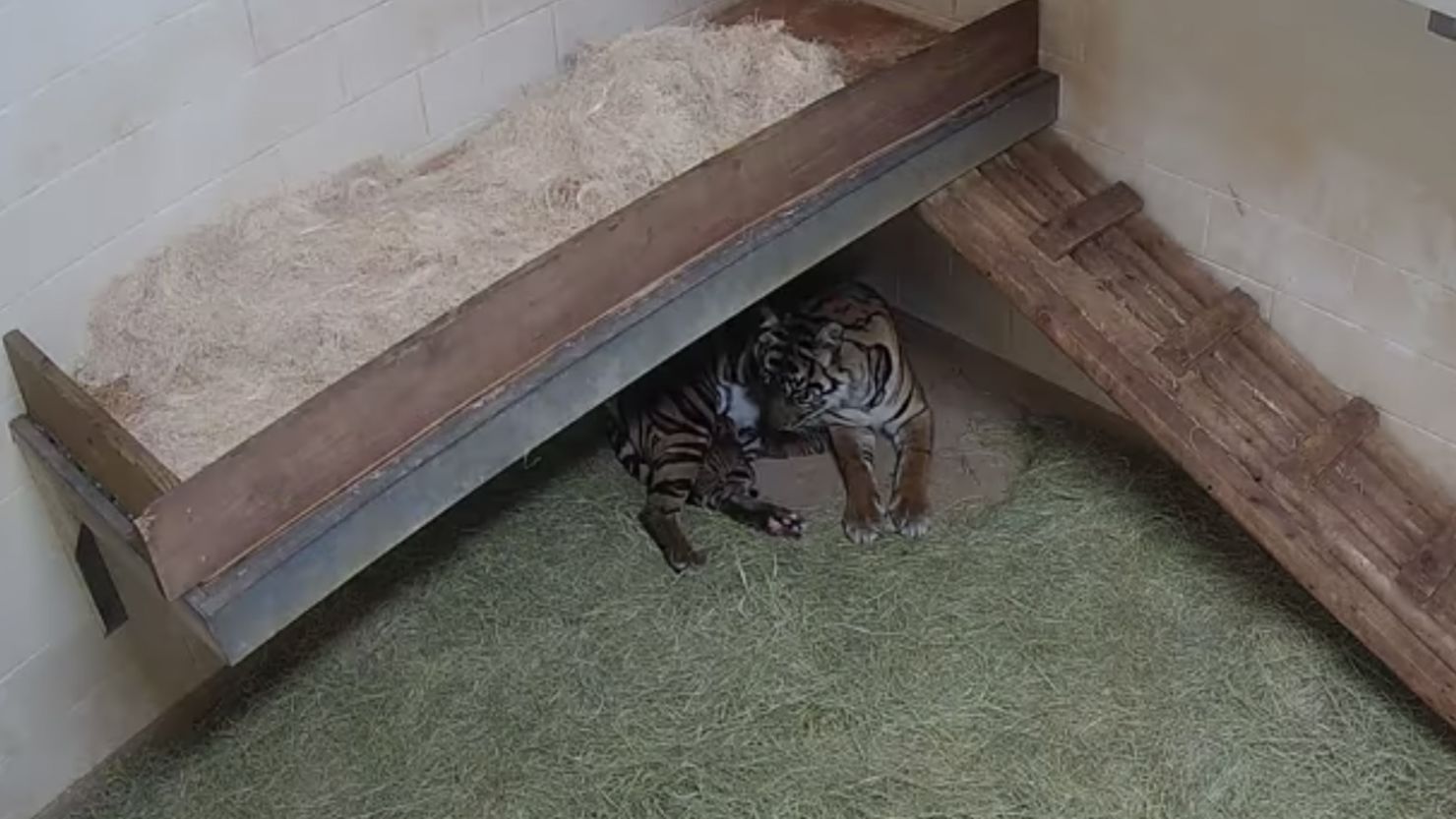Twin newborn Sumatran tiger cubs are bonding with their mother, having been born minutes apart early on July 2 at the Oklahoma City Zoo.
Eleven-year-old Lola gave birth to the first cub at 4:31 a.m. and the second at 4:49 a.m.
In a press release on Wednesday, the zoo said Lola and her cubs were doing well and had reached critical milestones, including nursing.

In a few weeks, a veterinary team will examine the cubs to weigh and measure them, according to the release. They will also find out the cubs’ sex.
“Lola has proven to be an extremely attentive and nurturing mother to these new additions to our animal family,” said Tyler Boyd, the zoo’s curator of carnivores. He said throughout her pregnancy, she has participated in ultrasound monitoring and training sessions and has allowed caretakers to be prepared for the cubs’ arrival.

Perhaps it’s no wonder: Lola is an experienced mother, having given birth to triplets on her own birthday in 2017, according to the zoo. Days later, she was given a fourth newborn to care for. Zoya, an Amur tiger, was born at the Philadelphia Zoo, but her mother didn’t have the maternal instincts to care for her. It was the first documented case of cross-fostering tigers of a different subspecies among the Association of Zoos and Aquariums (AZA) zoos, according to the press release.
Lola and her three siblings were also born at the Oklahoma City Zoo, which participates in the AZA Species Survival Plan for Sumatran Tigers. The group had made the recommendation for Lola to breed with Kami, a 14-year-old male.

The subspecies, named after the Indonesian island of Sumatra it inhabits, is on the IUCN Red List of Threatened Species. An estimated 400 to 500 wild Sumatran tigers remain in the dense forests of Indonesia.
Fauna & Flora International explains that poaching is a particular threat. These rare big cats are hunted for their skin, bones and canine teeth, which are in high demand as status symbols, mostly in other countries, and for use in East Asian traditional medicine, according to the group. Deer, a major food source for these tigers, are also poached. The tigers’ habitats are shrinking because of oil palm, coffee and acacia plantations.
Lola and her cubs will remain away from public view until the cubs are old enough to get their shots and navigate their outdoor habitat, the Oklahoma City Zoo said. The zoo invites the public to track the cubs’ progress on social media.

